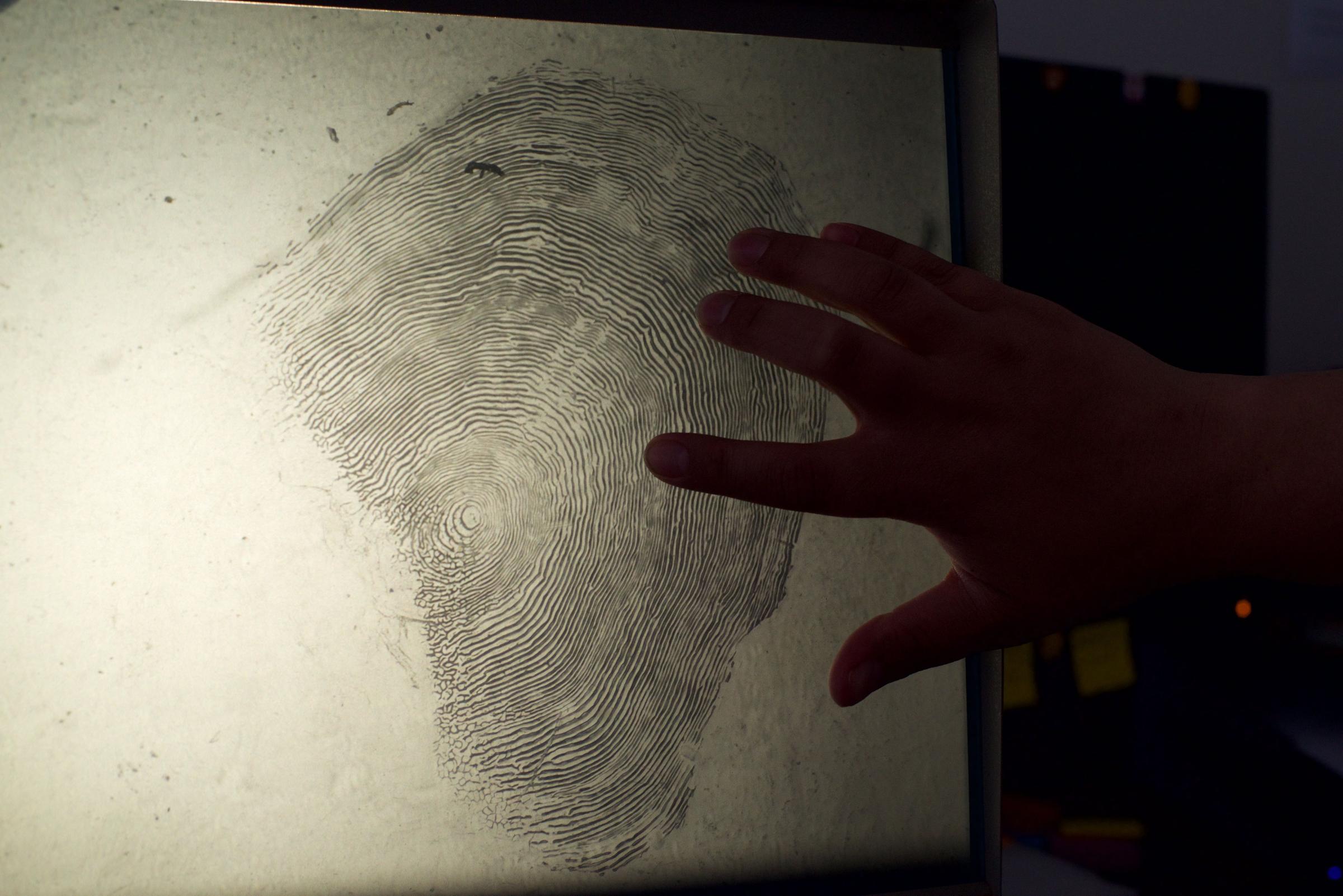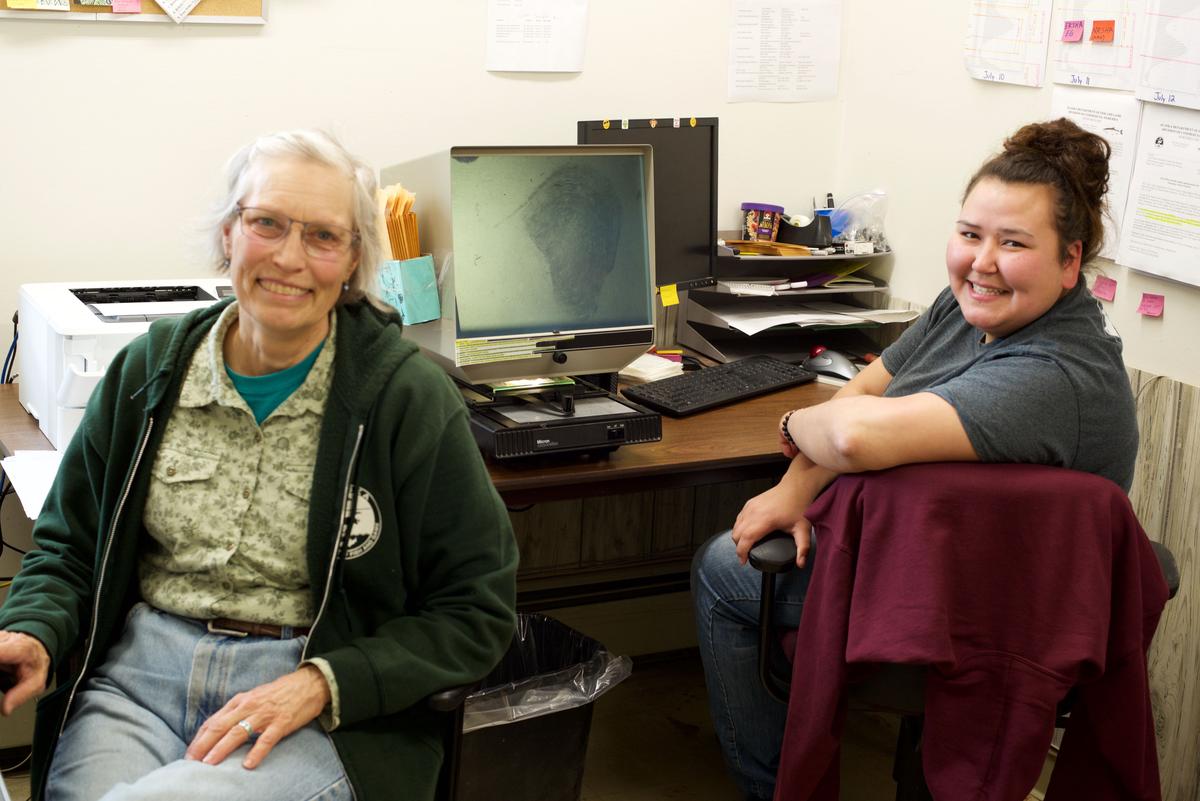
Across Bristol Bay, scales from fish are being picked, licked and stuck on cards to be sent to researchers.
The reason? To figure out the ages of the salmon making their way up the rivers during the run.
Researcher Cathy Tilly has spent almost 30 summers examining scales and figuring what fish are head where.
Tilly puts a thin sheet of plastic over a paper card with rows of fish scales on it and then places it into a hydraulic press.
She described the process, “then I can start pumping the pressure up and we go up to 25,000 psi and count to 15.”
It takes that much force to make imprints of the scales in the plastic.
“Then we use a dump valve to lower the clayton,” she said. “Pull these metal plates out. Peel it up and what you are left with is an impression of the fish scales.”
After pressing the scales, Tilly takes the small card with the impressions and examines it underneath a microfilm reader.
“Most people describe them as looking like a thumbprint or as tree rings,” she said.
Tilly figures out the age of a salmon. Like trees, salmon have rings on their scales that show how old they are. Tilly looks at these markings that indicate the fish’s growth to figure out how many years they spent in freshwater, rivers where they were born and how many they spend in the ocean.
Tilly and one other person age all the scales collected from the Bristol Bay sockeye run, which means they each look at tens of thousands of scales in a summer.

Mitch Borden)
Knowing the age of the fish returning to Bristol Bay’s rivers, helps biologists forecast and manage future runs. It can also provide more information on why a run is turning out differently than forecasted.
“For instance, this season why aren’t we seeing the age class 2:2,” Till said. “That’s a big component, especially in the Egegik River.”
Egegik was predicted to have an above average sockeye run this year. By mid-July, however, not even half the forecasted 9.1 million sockeye have returned.
With the data Tilly and her fellow scale-ager collected, biologists were able to surmise quickly that the run may be coming in under forecast and enacted conservation measures. Those actions ensured enough sockeye would get up the river to sustain future runs.
Even though she spends her summer in a small office instead of on the water Tilly adores the role she plays in the Bristol Bay salmon fishery.
“Looking around the world and knowing how incredibly special because how it’s been taken care of is exciting,” she said. “I love being apart of that.”
The sockeye season is on track to start winding down in the coming weeks.
Until then, Tilly will keep plugging away at aging the scales put in front of her.
